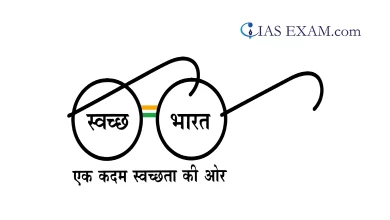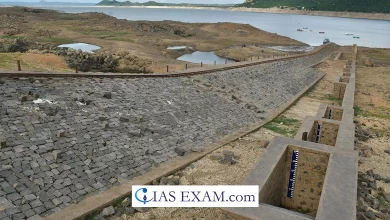
Context –
Recently, a number of opposition-ruled states, especially from Southern India, have raised their concerns regarding the present scheme of financial devolution. They have argued that they are receiving less than their proportionate share of receipt in tax revenue as compared to their contribution towards tax collection.
As India’s federal structure evolves, the discourse surrounding financial devolution unveils both opportunities and challenges, reflecting the nation’s quest for equitable growth and decentralized governance. Understanding the concept of the divisible pool of taxes and the role of the Finance Commission is crucial in addressing these issues.
Financial Devolution & Divisible Pool of Taxes
- Financial devolution is the bedrock of fiscal federalism in India, encapsulating the principles of decentralization, autonomy, and equitable distribution of resources.
- Enshrined in the Constitution, it delineates the mechanism through which resources are allocated between the central and state governments, facilitating localized decision-making and responsive governance.
- Financial devolution empowers states to address regional disparities, foster inclusive growth, and enhance accountability in governance by aligning resource allocation with local priorities and needs.
- Article 270 of the Constitution outlines the distribution of net tax proceeds between the Centre and the States. Taxes shared include corporation tax, personal income tax, Central GST, and the Centre’s share of Integrated Goods and Services Tax (IGST), among others.
- Article 280(3) (a) mandates the Finance Commission, constituted every five years, that recommends the division of taxes and grants-in-aid to States based on specific criteria.
Basis for Allocation of Taxes
- Vertical Devolution – States receive a share of 41% from the divisible pool, as per the 15th FC’s recommendation.
- Horizontal Devolution – The FC suggested 12.5% weightage to demographic performance, 45% to income, 15% each to population and area, 10% to forest and ecology and 2.5% to tax and fiscal efforts.
- Income Distance: Reflects a state’s income relative to the state with the highest per capita income (Haryana), aiming to maintain equity among states.
- Population: Based on the 2011 Census, replacing the earlier 1971 Census for determining weightage.
- Forest and Ecology: Considers each state’s share of dense forest in the total forest cover.
- Demographic Performance: Rewards states for efforts in controlling population growth.
Tax Effort: Rewards states with higher tax collection efficiency.
Challenges and Issues
- Exclusion of Cess and Surcharge – Cess and surcharge, which are not included in the divisible pool, account for around 23% of the Center’s gross tax collections, resulting in unequal income distribution.
- Variation in State Contributions: This shows discrepancies in income allocation, with some states receiving less than one rupee for every rupee they give to central taxes.
- Reduced Share for Southern States – Over the course of several FCs, the Southern states have seen a reduction in their portion of the divisible pool, which has had an impact on their financial independence.
- The current financial devolution plan is not without its difficulties and inequalities. The worries expressed by states run by opposition highlight the fundamental conflicts resulting from the existing devolution structure. States are legally entitled to a portion of central taxes, but the criteria used to distribute them are sometimes too general and don’t take into account the complex dynamics of local economies and financial capacity.
- Furthermore, the existing framework frequently ignores the developmental requirements of smaller, resource-constrained states in favor of those states with higher populations and economic might. This exacerbates regional inequities and challenges the fiscal federalism’s guiding ideals of inclusion and equality.
Proposed Reforms
- Expansion of Divisible Pool: Improving income distribution between states can be achieved by adding a portion of the cess and surcharge to the divisible pool.
- Enhanced Weightage for Efficiency: In horizontal devolution, increasing the weightage for efficiency criteria—like the GST contribution—can encourage fair distribution.
- Greater State Participation in FC: Creating a formal system that allows states to participate in the FC’s operations and constitution, much as the GST council, can guarantee a more inclusive decision-making process.
Conclusion:
In order to effectively address financial devolution, the federal government and the states must work together, emphasizing on fiscal federalism and fair distribution. Balanced development and resource distribution throughout the nation depend on changes to revenue-sharing arrangements and increased state involvement in decision-making organizations such as the FC.
As India navigates the contours of fiscal federalism, a steadfast commitment to principles of equity, inclusivity, and responsive governance will be instrumental in fostering an environment conducive to equitable growth and shared prosperity across its diverse landscape.
SOURCE: The Hindu





.png)



